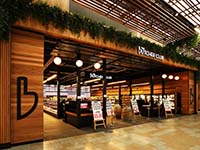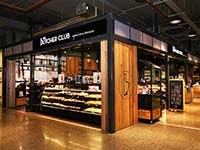Businesses that process, serve, or sell food products to clients or customers mostly maximise cold storage solutions. These cold storage solutions are intended to preserve the freshness of the food products as well as prevent bacteria and other harmful microorganisms from spoiling them.
Some cold storage solutions that food businesses use include freezers and refrigerators. What is common about these things is that they can be set to certain cold or even freezing temperatures just to maintain the quality of food products. But one factor about food products that business owners should know about is their optimum storage temperatures. Their recommended storage temperature typically differs from one another, making the whole food storage process a little bit complicated.
Proper Food Storage Procedures
There are tons of food storage procedures that business owners like you should know about.
For one, you must prevent the temperature of your cold storage solutions from reaching beyond 4°C since exceeding this temperature can initiate the spoilage of your products. And if possible, you may want to store some of your food products in covered and non-toxic containers. Raw food products must also be stored below food products that are already cooked. Thawed food products likewise should not be frozen again as it can affect their overall quality and freshness.
Ultimately, high-risk food products must be taken care of effectively as they are usually expensive to purchase and time-consuming to prepare. The growth of bacteria among these products is also faster than other types of food products. Some examples of high-risk food products include raw and cooked meat, dairy products, eggs and egg products, seafood, prepared salads, and ready-to-eat food products.
Appropriate Storage Temperature
Dry foods do not need to be stored in your cold storage solutions. However, you must ensure that they are kept in areas with a temperature range of 10°C to 15°C to prevent spoilage. Their storage areas must also be free from pests so that they do not get damaged.
As for food products that need to be refrigerated, they must be stored in spaces with a temperature of 4°C and below. Dairy products and most produce, alternatively, should be stored in refrigerators that have a temperature of 2°C to 4°C. Fresh meats, poultry, and seafood can be stored in refrigerators with a temperature of 4°C and below. Frozen products, lastly, should be stored in freezers with a temperature of -18°C and below. Going beyond these temperatures can lead to spoilage diminished vitamin content.
The temperature of your storage units must be monitored every day to ensure that they are within the recommended temperature. These units must also be assessed and maintained by professionals regularly so that any faulty components can be fixed or replaced right away. They must likewise be cleaned regularly so that the storage space remains free from dirt particles.
For more information about safe food storage, feel free to call us at P&R Commercial Refrigeration.
Optimized by: Netwizard SEO




